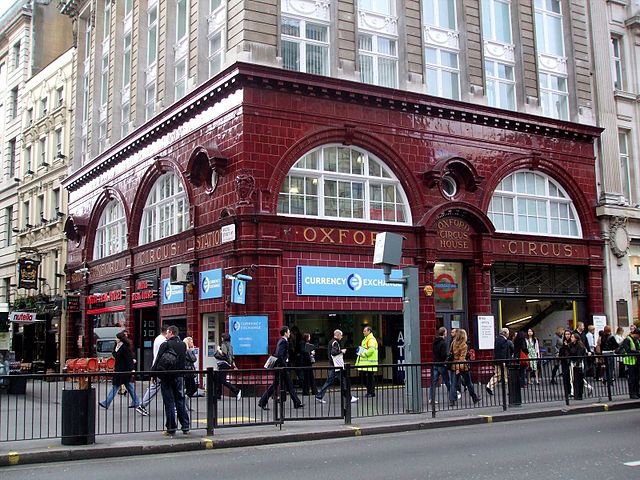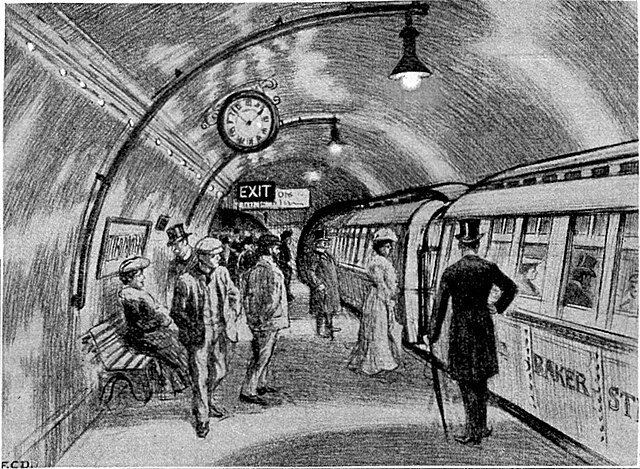Baker Street and Waterloo Railway
The Baker Street and Waterloo Railway (BS&WR), also known as the Bakerloo tube, was a railway company established in 1893 that built a deep-level underground "tube" railway in London. The company struggled to fund the work, and construction did not begin until 1898. In 1900, work was hit by the financial collapse of its parent company, the London & Globe Finance Corporation, through the fraud of Whitaker Wright, its main shareholder. In 1902, the BS&WR became a subsidiary of the Underground Electric Railways Company of London (UERL) controlled by American financier Charles Yerkes. The UERL quickly raised the funds, mainly from foreign investors.
Oxford Circus station, an example of the Leslie Green design used for most of the BS&WR's stations
An original 1907 ticket office window at Edgware Road tube station (Bakerloo line)
Wall tiling at Regent's Park tube station showing the station name and Green's geometric decoration
Passengers waiting to board a BS&WR train via the lattice gates at the end of the carriages
James Whitaker Wright was a company promoter and swindler, who committed suicide at the Royal Courts of Justice in London immediately following his conviction for fraud.
Drawing of Whitaker Wright, 1904
Grave of Whitaker Wright at All Saints' Church, Witley






